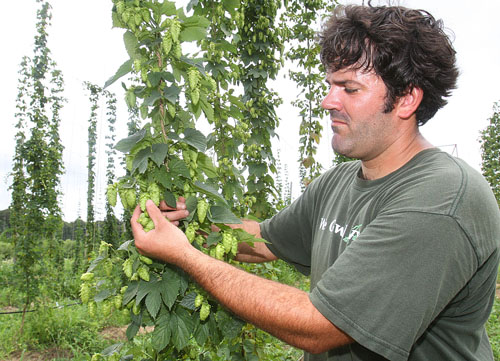USDA stats: Young farmers growing fast in New York

The U.S. Department of Agriculture released its most recent report outlining the health of agricultural markets nationwide based on data from 2012. And while the number of overall farm operators are on the decline in New York State, the younger crop of farmers seems to be growing fast, numbers show.
The annual report, known as the USDA Census of Agriculture, presents national data collected from growers. The 100-page preliminary report was released online Thursday, with a full report expected to be released in late spring. Information is split up by state, and compares data between a five year period — in this case comparing 2012 and 2007.
According to the report, farmers under the age of 35 in New York State grew 14.4 percent over the five-year period, far above the modest national increase of 1.1 percent. In 2012, nearly 2,150 farmers under age 35 were running farms, including 185 under the age of 25. That compares to 159 farmers age 24 and below in 2007, and another 1,720 aged 25 to 34.
On the whole, the number of farm operators nationwide fell 4.3 percent, while New York State saw a decline of 2.2 percent.
Joe Gergela, executive director of the Long Island Farm Bureau, said the sparked interest amongst young farmers is evident locally, however the high costs associated with farming on Long Island still stands in their way.
“Land is expensive, and access of land has been identified as one of the biggest challenges for young people wanting to start-up on Long Island,” he said, adding that the spike farms being operated by latino populations, another growing cohort statewide, has not been seen here — yet.
Statewide, the number of farms being operated by Spanish, Hispanic or Latino origins increased by 27 percent, from 220 farms in 2007 to 281 in 2012.
“Nationally, it’s probably true because there is a big latino population. Over time I think we’ll probably realize some of them in our community as well,” he said.
According to the report, land being used for farm operations in New York has increased from 7,174,743 acres in 2007 to 7,183,579 in 2012 — a .12 percent increase. Across the nation, a drop of 0.8 percent in farmland was reported.
That farmland growth in New York State correlated to a $1 billion increase in market value for agricultural products sold — an 18 percent increase in the five-year period.
Mr. Gergela said the increase in farmland has been seen locally, as a number of small farm operations have popped up since 2011.
“There’s been a movement since [2011] that has really heightened interest in not only the production side, but in nutrition general,” he said. “I think part of it is particularly families that have children are really interested in nutrition and the wholeness of their kids food. I think there is heightened awareness about food in general.”
He added that an increase in the products’ market value may not necessarily be a positive thing, as it is likely associated with overall spikes in the the costs of food nationally — which can make it more difficult to feed one’s family.
Subsidies for New York farmers over that period increased by 18 percent from $62,652 to $74,511 in that time.
In a statement regarding the newly released data, USDA agriculture secretary Tom Vilsack said “the preliminary data provides a snapshot of a strong rural America that has remained stable during difficult economic times…The data confirm that farm income is at a record high.”
“A bright spot in the data is the slight increase in young farmers and the stable number of small farms and large-scale farms. This reflects our work to grow both local and regional food systems and exports, but we must do more for mid-sized operations,” he said.
Mr. Vilsack added that the the recent passage of the farm bill will also help start-up operations.
Scroll below to view the full preliminary report, and to see how New York farm operations stack up nationally.
Census of Agriculture 2012 Preliminary Report


